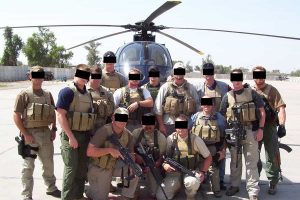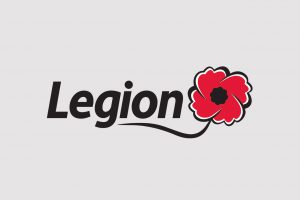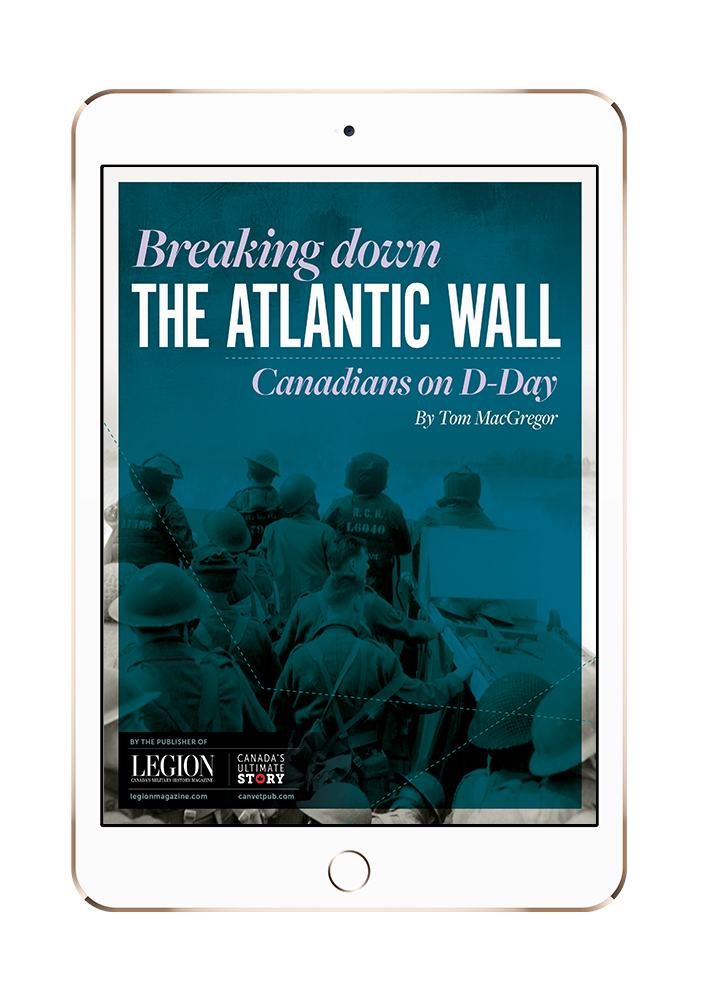
King Charles III waves to the crowd as he and Queen Camilla depart the National War Memorial after placing a wreath on the Tomb of the Unknown Soldier the day before the 25th anniversary ceremonies.[Stephen J. Thorne/Legion Magazine]
Vimy, because it was here, in France in April 1917, that all four divisions of the Canadian Corps fought together for the first time, claiming—under unprecedented Canadian leadership—a victory that would propel the country to its rightful place in the war, and the world. Brought home, because Canadians—indeed, all secure, free-living people—need reminding of what it took, and still takes, to keep them secure and free.

RCMP officers place their poppies on the Tomb of the Unknown Soldier in Ottawa. [Stephen J. Thorne/Legion Magazine]
On May 28, 2000, the remains were laid in state at the Hall of Honour in Parliament before they were interred in the shadow of Canada’s National War Memorial to lie in anonymity forever.
It was the culmination of years of effort by The Royal Canadian Legion.

Retired brigadier-general Duane Daly (left) and retired vice-admiral Larry Murray, grand president of The Royal Canadian Legion, remove their poppies to place on the Tomb of the Unknown Soldier. [Stephen J. Thorne/Legion Magazine]
And on May 28, 2025, veterans, serving military, dignitaries, schoolchildren and Legionnaires gathered to pay tribute to The Unknown Soldier and all his comrades, and lay their poppies on his concrete sarcophagus.

Former governor general Adrienne Clarkson listens to speakers at ceremonies in Ottawa marking the 25th anniversary of the Tomb of the Unknown Soldier. Clarkson gave an eloquent speech at the dedication in 2000. [Stephen J. Thorne/Legion Magazine]
“We cannot know him,” she said then. “And no honour we do him can give him the future that was destroyed when he was killed. Whatever life he could have led, whatever choices he could have made are all shuttered. They are over.
“We are honouring that unacceptable thing—life stopped by doing one’s duty. The end of a future, the death of dreams.”
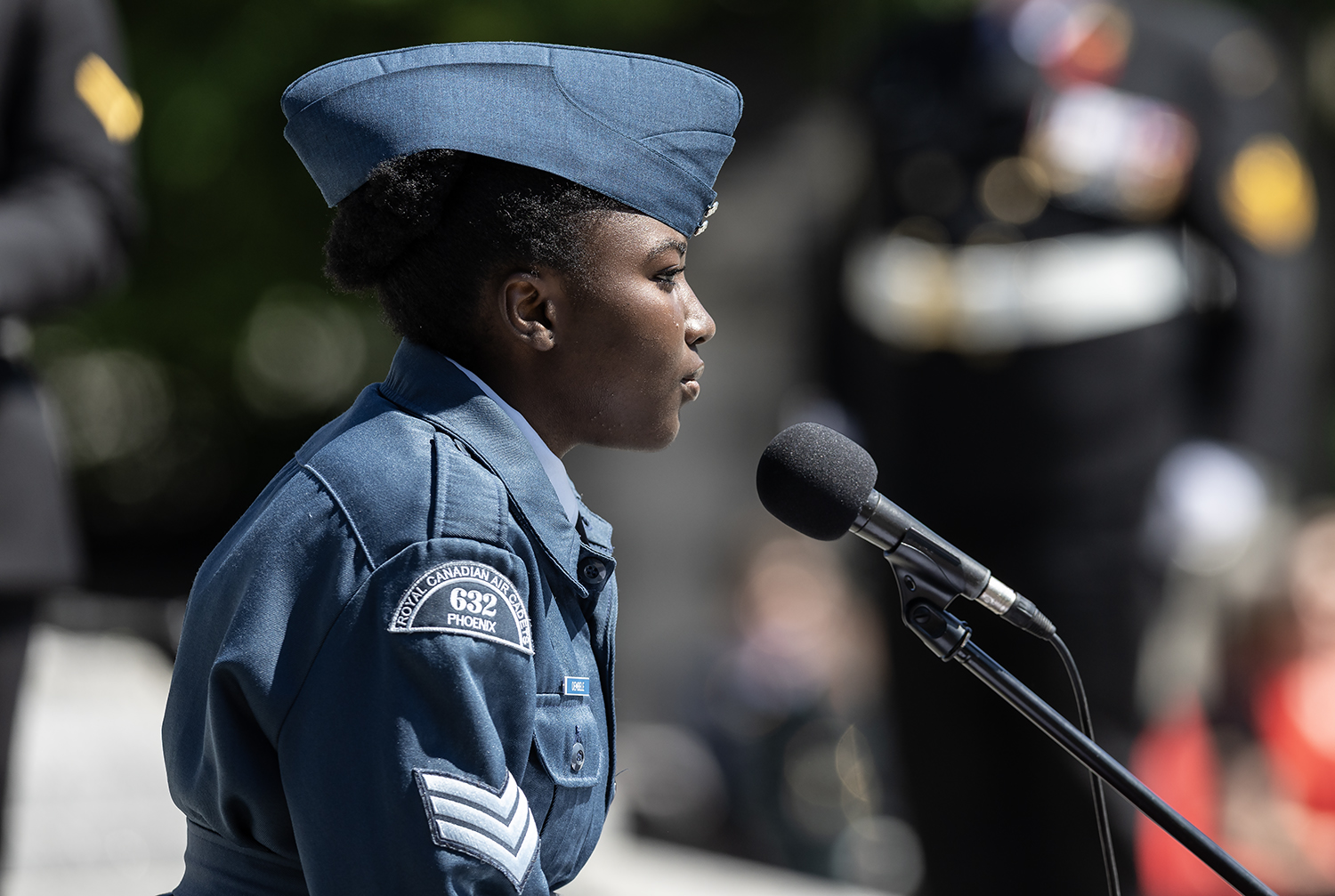
Air Cadet Sergeant Awa Dembele recites the Commitment to Remember.[Stephen J. Thorne/Legion Magazine]
“There are places that ask something of us,” Walker, told the crowd. “Places we cannot pass by casually. This is one of those places.”
The Legion’s grand president, retired vice-admiral Larry Murray, spoke. So did retired brigadier-general Duane Daly who, as RCL dominion secretary at the time, first proposed the tomb idea after an eye-opening trip to South Africa.
There, he had found Canadian war dead buried where they fell, their graves—often single plots in farmers’ fields—marked by the granite stones that had served as ballast aboard the ship that brought them to their deaths so far from home.
Daly related the story of how Legion efforts to bring an unidentified soldier home for burial at the National War Memorial were stonewalled by successive governments, who pointed to Britain’s Unknown Warrior, interred at Westminster Abbey on Armistice Day 1920, saying he represented all of the British Empire.
“Accepting the reality of the situation, the Legion remained undaunted,” said Daly, “and decided to take on the task of repatriating an unknown soldier itself” as a millennial project. A national survey reflected “overwhelming support” for the idea.

A veteran and his wife place their poppies on the Tomb of the Unknown Soldier in Ottawa. [Stephen J. Thorne/Legion Magazine]
Departmental budgets were arranged to ensure the project was adequately funded. In a 20th anniversary interview with Legion Magazine, Daly said three public servants were critical to the initiative: Gerry Wharton, director ceremonial at Public Works and Government Services, came up with the design concept; Brad Hall of the Canadian Agency of the Commonwealth War Graves Commission, led the remains recovery in France; and Marc Monette, director of Public Works, Parliamentary Precinct, oversaw construction of the tomb and its placement. He also ran the design competition, won by Canadian artist Mary-Ann Liu.
Attention to detail was critical, from ensuring the granite came from the same Quebec quarry as the rest of the monument to finding a suitable gun carriage to transport the remains from Parliament Hill to the final resting place. The RCMP provided a gun carriage and mounted escort for the funeral cortège.
The sarcophagus contains soil from the soldier’s original grave in France as well as from each province and territory, and a feather to represent Indigenous Peoples.
The memorial’s bronze sculptures include key elements of the stone carving on the Vimy Memorial altar: a medieval sword, a helmet, and branches of maple leaves symbolizing victory and death.
Four bronze corner pieces complement the structure—three reproductions of the Canadian Memorial Cross and a poppy, the symbol of remembrance.

Gov. Gen. Mary Simon places a wreath at the National War Memorial marking the 25th anniversary of the Tomb of the Unknown Soldier. [Stephen J. Thorne/Legion Magazine]
A headstone still marks the original grave.

Former governor general Adrienne Clarkson and her husband John Ralston Saul place poppies on the Tomb of the Unknown Soldier at the National War Memorial in Ottawa. [Stephen J. Thorne/Legion Magazine]
“We gather here—not to glorify war, but to bear witness to its reality, and to honour what was asked of those who served.
“We gather to express how what they gave has immense value. That defines and allows for the very freedoms we now get to live out.”

Lieutenant-General J.P.R. Provost and Chief Warrant Officer Frederick Lavoie place their poppies on the Tomb of the Unknown Soldier. [Stephen J. Thorne/Legion Magazine]
The concept traces its roots to November 1916 in France, where a local officer of Le Souvenir français proposed the idea of memorializing “an unknown soldier.” The proposal was passed by the French parliament in September 1919.
In Britain, Reverend David Railton proposed a similar initiative after he saw a grave marked by a rough, improvised cross while serving as a British Army chaplain on the Western Front. It was inscribed in pencil “An Unknown British Soldier.”
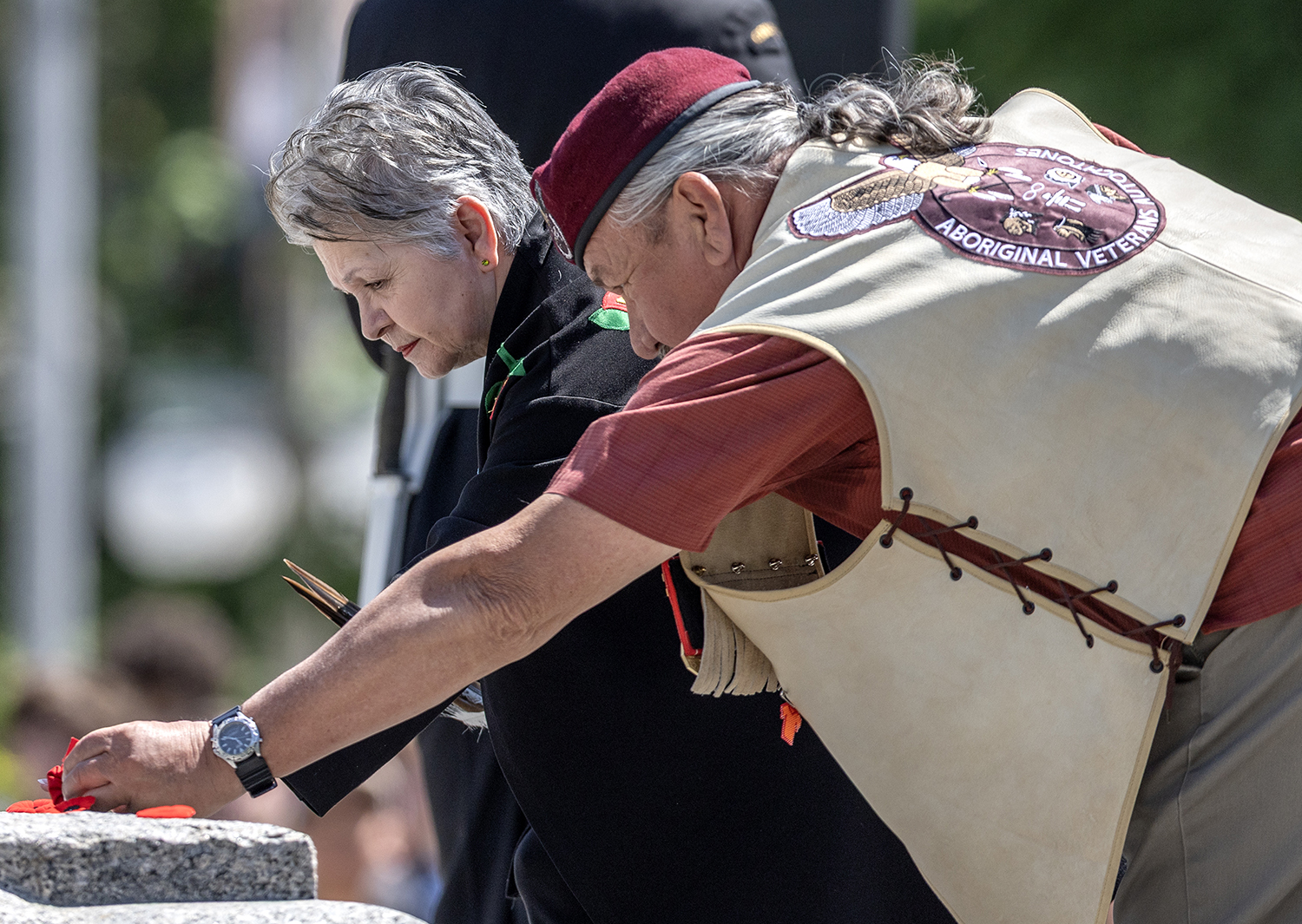
Elder Claudette Commanda of the Kitigan Zibi Anishinabeg First Nation in Quebec and retired chief warrant officer J.C. Young of the Fond du Lac First Nation in Saskatchewan place poppies on the Tomb of the Unknown Soldier. [Stephen J. Thorne/Legion Magazine]
The United Kingdom and France held their dedication ceremonies the same day. La tombe du soldat inconnu was placed in the Arc de Triomphe.
The idea soon gained traction around the world. The United States unveiled its own Tomb of the Unknown Soldier in 1921 at Arlington National Cemetery, across the Potomac River from Washington, D.C.
The Americans have since entombed the remains of unknown soldiers from the Second World War, Korean War and Vietnam at the site.
Other nations have followed suit—at least 63 to date. In Chile and Ukraine, second unknown tombs were unveiled to commemorate The Unknown Sailor.
With the advent of DNA analysis, scientists have been able to identify human remains as far back as the War of 1812.Since 2007, the National Defence Casualty Identification Program has identified at least 49 Canadians through several methods, including historical, archeological and anthropological research; laboratory sciences; forensic odontology; genealogy; and artifacts.
Canadian dead from the two world wars, Korea and other conflicts are buried overseas in lands offered up for the purpose by the countries in which they fell.
Canada changed its policy against repatriating war dead in July 1970 and now brings their remains home for burial at sites chosen by their families.
Advertisement












